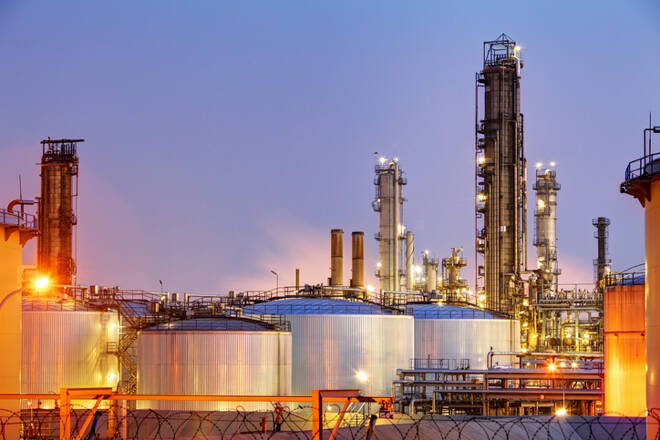Advertisement
Advertisement
Natural Gas Price Fundamental Daily Forecast – Little Change after EIA Reports Slightly Higher Storage Build
By:
The price action suggests the market may be closer to a short-term bottom than previously anticipated.
Natural gas futures are trading nearly flat after the release of a weekly government storage report that came out a little more than the average forecast. Also capping gains are concerns over a cooler short-term weather pattern and low LNG demand. Traders are also paying close attention to the surge in U.S. coronavirus cases since this could have a negative impact on industrial and business demand.
At 15:47 GMT, August natural gas futures are trading $1.726, down $0.001 or -0.06%.
U.S. Energy Information Administration Weekly Storage Report
The EIA reported Thursday that domestic supplies of natural gas rose by 85 billion cubic feet for the week-ended June 12. That was a little higher than the average increase of 79 billion forecast by analysts polled by S&P Global Platts.
The latest build marked a decline from the 93 Bcf injection a week earlier. It compared with a build of 111 bcf during the same week a year earlier and a five-year average build for the week of 87 Bcf.
Natural Gas Intelligence (NGI) reported that ahead of the report, a Bloomberg poll found injection estimates ranging from 78 Bcf to 87 Bcf, with a median of 84 Bcf. A Wall Street Journal survey produced an average of 85 Bcf, in line with results of a Reuters survey. NGI estimated an 86 Bcf build.
Total stocks now stand at 2.892 trillion cubic feet, up 722 billion cubic feet from a year ago, and 419 billion cubic feet above the five-year average, the government said.
Daily Forecast
The latest figures from the EIA suggest that supply and demand are gradually pulling toward a balance point, analysts said, as businesses reopen amid the coronavirus pandemic and economic activity starts to gather momentum, driving energy demand.
Bespoke Weather Services said the build continued “the trend of tighter supply/demand balances,” though “this does little to solve the question centered around possible containment in the fall,” given ongoing uncertainty about the pandemic’s lasting impacts and weak global demand for U.S. exports.
Summer weather also helped. “Heat is soaking up the gas,” said one participant on The Desk’s online energy platform Enelyst.
The price action suggests the market may be closer to a short-term bottom than previously anticipated. Remember the first up move is likely to be fueled by short-covering. If there is a second rally after a retest of the lows then this will likely be fueled by aggressive counter-trend buyers.
For a look at all of today’s economic events, check out our economic calendar.
About the Author
James Hyerczykauthor
James Hyerczyk is a U.S. based seasoned technical analyst and educator with over 40 years of experience in market analysis and trading, specializing in chart patterns and price movement. He is the author of two books on technical analysis and has a background in both futures and stock markets.
Latest news and analysis
Advertisement
